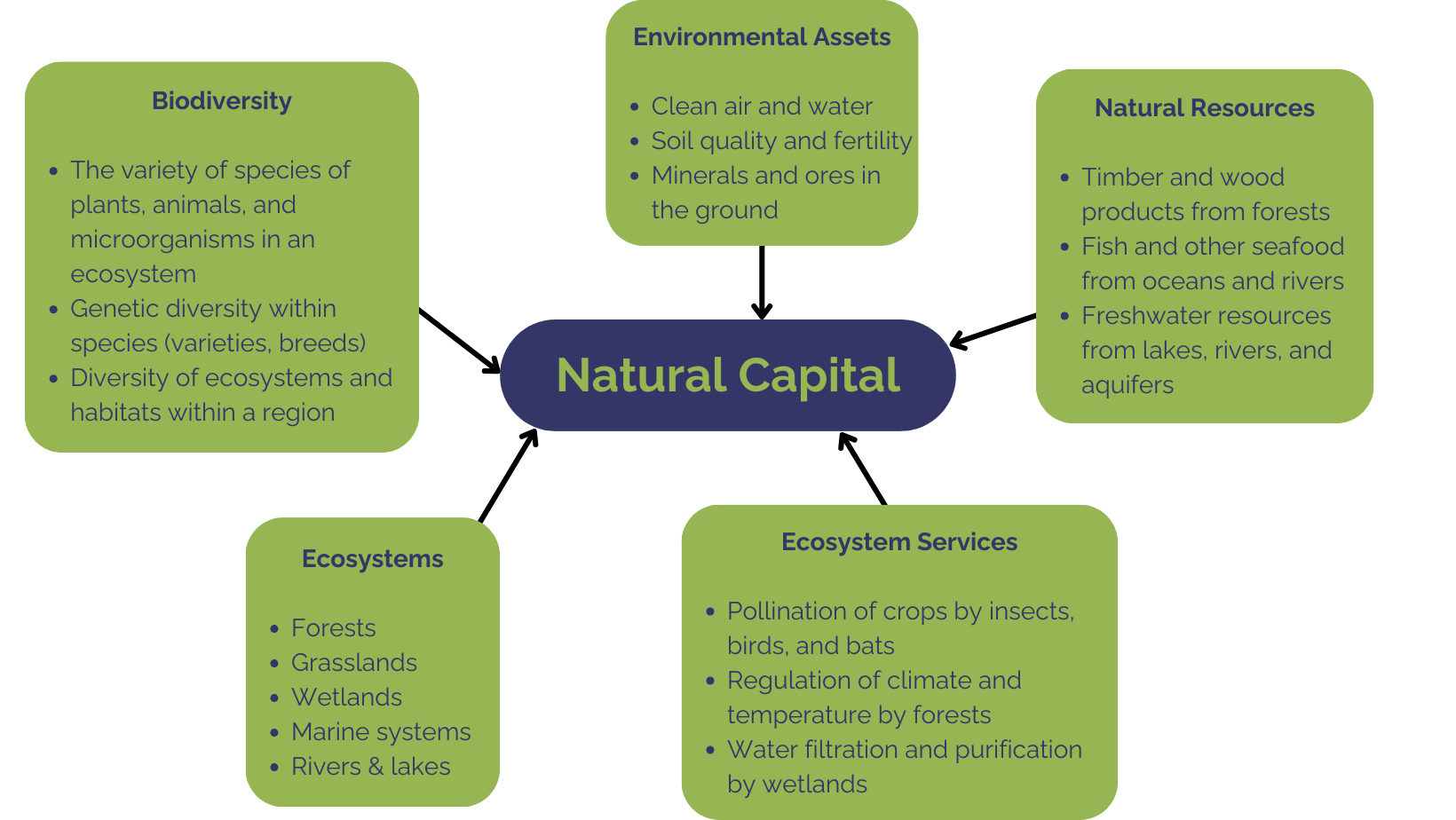What is Natural Capital?
Natural capital refers to the stock of natural resources and ecosystems that provide valuable goods and services to people. It encompasses a wide range of elements, including forests, wetlands, minerals, clean air and water, biodiversity, and various ecosystem services like pollination of crops, climate regulation, and recreational opportunities.
These natural resources and services are essential for human well-being and economic activity. For example, forests provide timber, clean water, and act as carbon sinks; wetlands offer flood regulation and water purification; and biodiversity supports agricultural pollination and genetic diversity.
Recognising and valuing natural capital is important for sustainable development because it helps us understand the benefits that nature provides to our economies and societies. This understanding can guide more responsible and informed decision-making about how we manage and use these resources.

Understanding and Valuing Natural Capital in Tees Valley
TVNP, in collaboration with Tees Valley Combined Authority and Natural England, has created a report called a “Natural Capital Account” for the Tees Valley area. This report provides a detailed look at the valuable natural resources in the region and how they benefit the local community.
The Natural Capital Atlas is a key component of this report. It offers in-depth information on the distribution and condition of the Tees Valley’s natural assets, using Natural Capital Indicators – metrics used to assess and quantify natural capital – to present this information through maps and tables.
It’s important to recognize that the natural resources in an area are part of a larger, interconnected, natural and cultural system. Therefore, this atlas serves as a valuable starting point for building a comprehensive body of evidence on natural capital, which can be used to inform decision-making nationwide.
The main goal of this report is to highlight how local planning decisions can be influenced by considering natural capital and to show how this approach to understanding and valuing natural resources can be applied in other areas.
You can access the full report and atlas by clicking on the links below.
